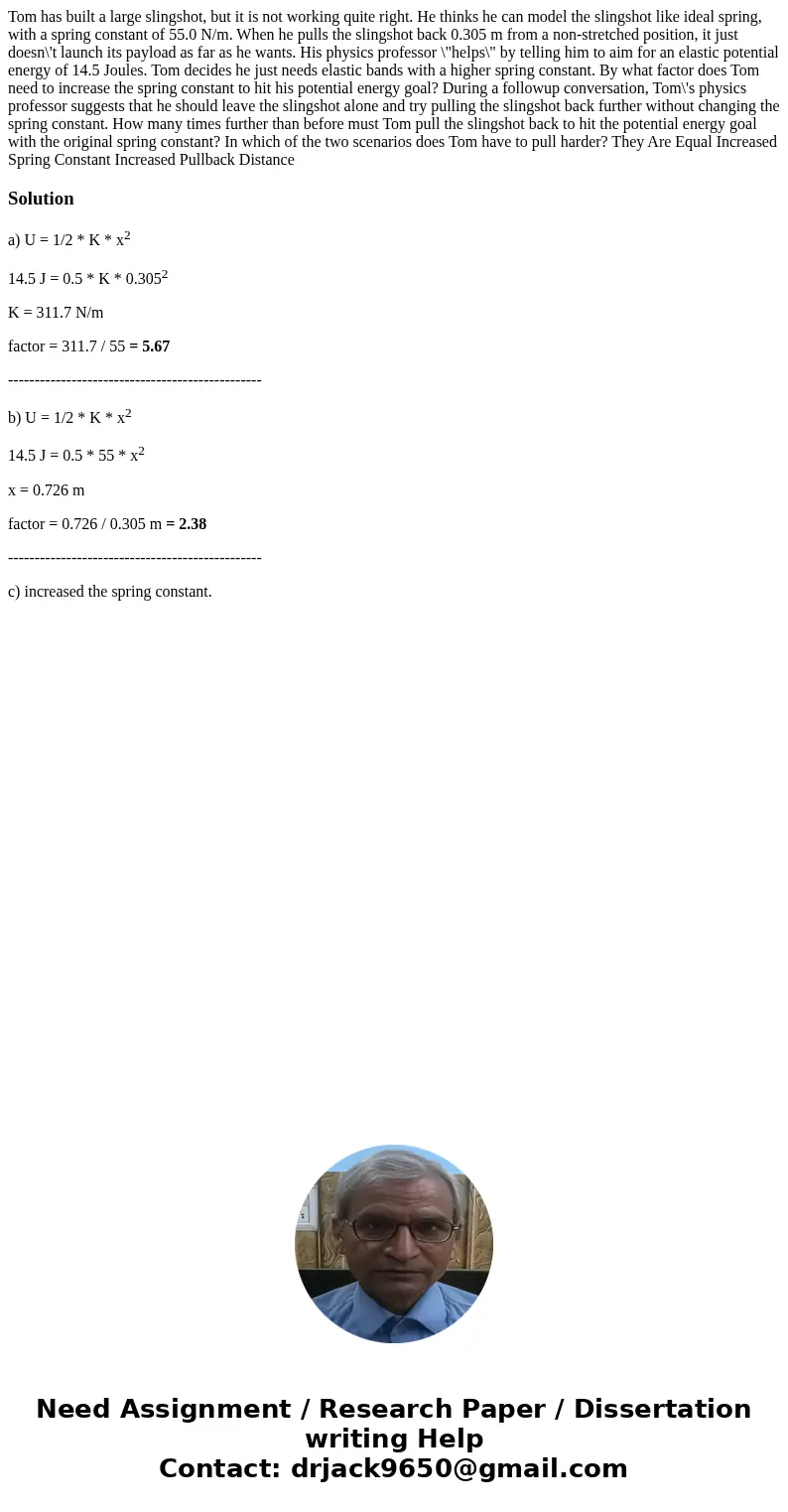Tom has built a large slingshot but it is not working quite
Tom has built a large slingshot, but it is not working quite right. He thinks he can model the slingshot like ideal spring, with a spring constant of 55.0 N/m. When he pulls the slingshot back 0.305 m from a non-stretched position, it just doesn\'t launch its payload as far as he wants. His physics professor \"helps\" by telling him to aim for an elastic potential energy of 14.5 Joules. Tom decides he just needs elastic bands with a higher spring constant. By what factor does Tom need to increase the spring constant to hit his potential energy goal? During a followup conversation, Tom\'s physics professor suggests that he should leave the slingshot alone and try pulling the slingshot back further without changing the spring constant. How many times further than before must Tom pull the slingshot back to hit the potential energy goal with the original spring constant? In which of the two scenarios does Tom have to pull harder? They Are Equal Increased Spring Constant Increased Pullback Distance
Solution
a) U = 1/2 * K * x2
14.5 J = 0.5 * K * 0.3052
K = 311.7 N/m
factor = 311.7 / 55 = 5.67
------------------------------------------------
b) U = 1/2 * K * x2
14.5 J = 0.5 * 55 * x2
x = 0.726 m
factor = 0.726 / 0.305 m = 2.38
------------------------------------------------
c) increased the spring constant.

 Homework Sourse
Homework Sourse